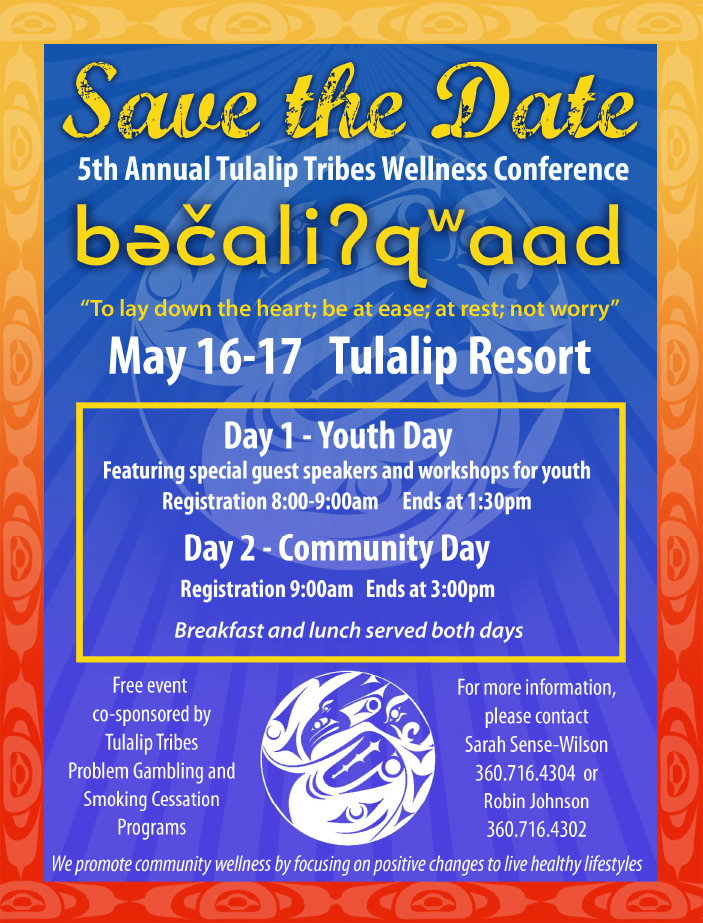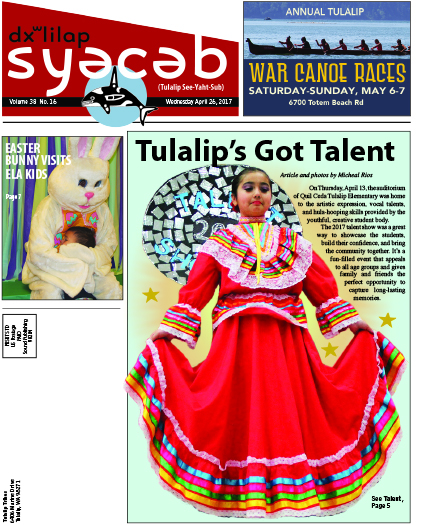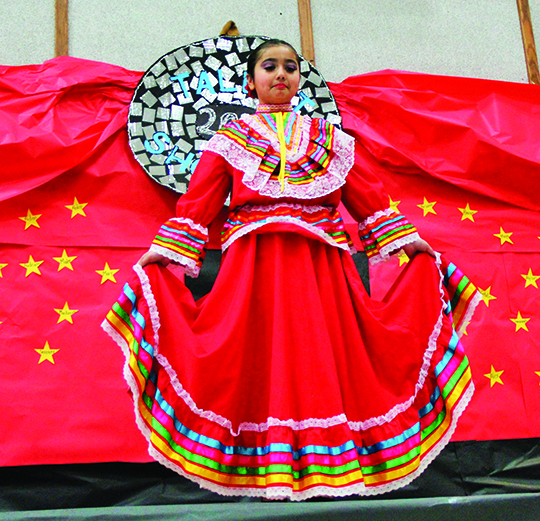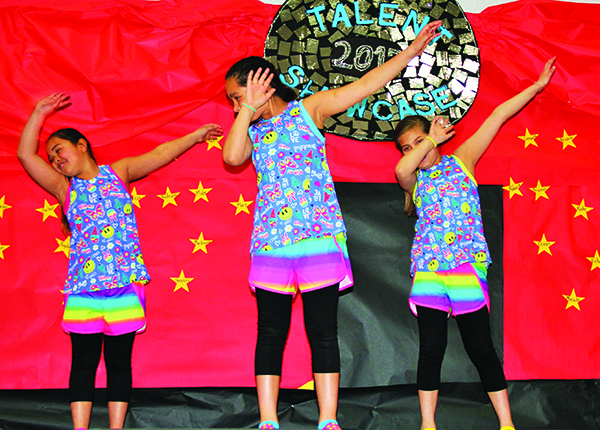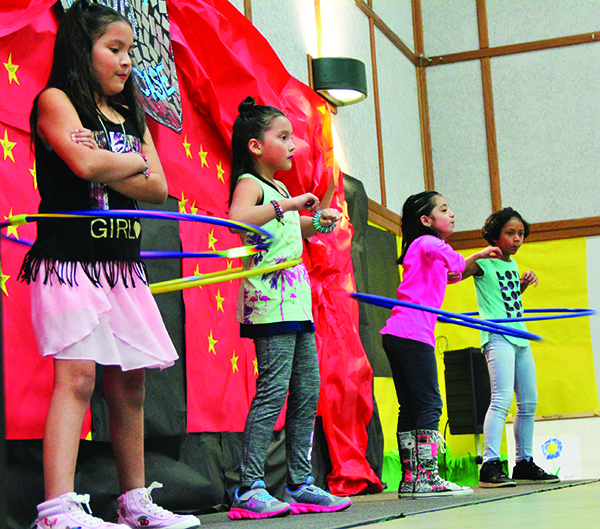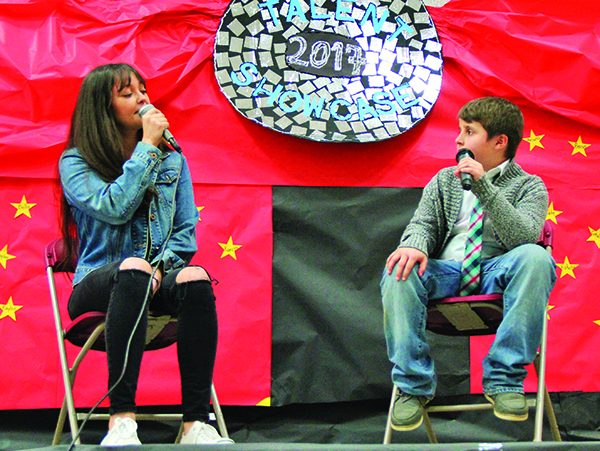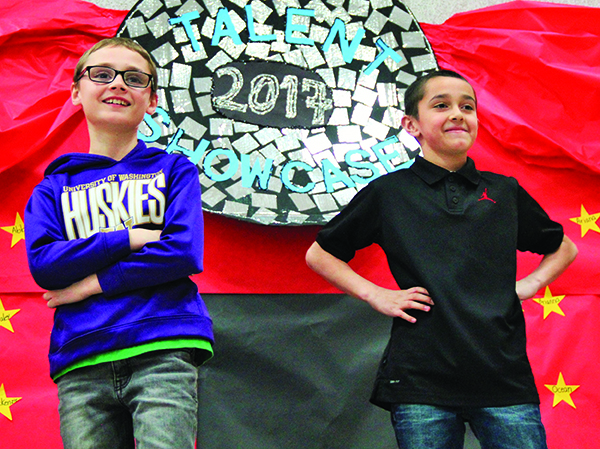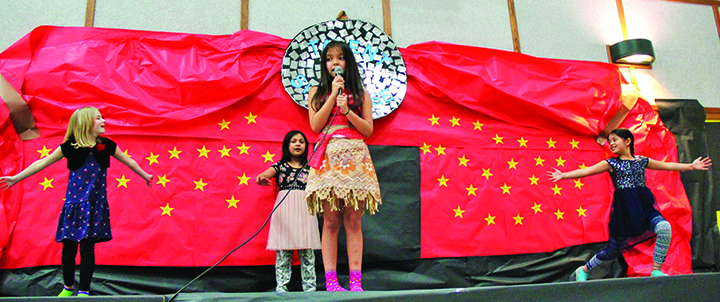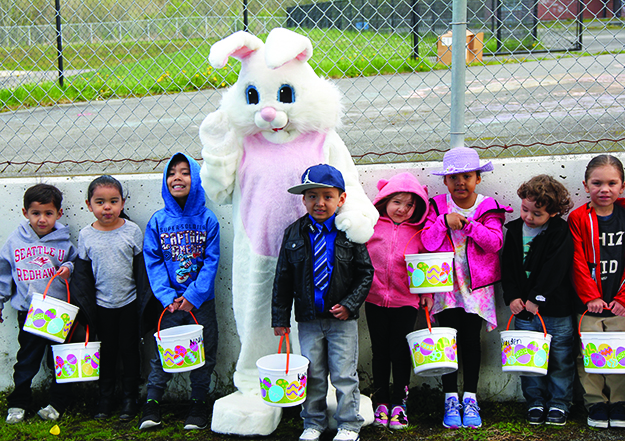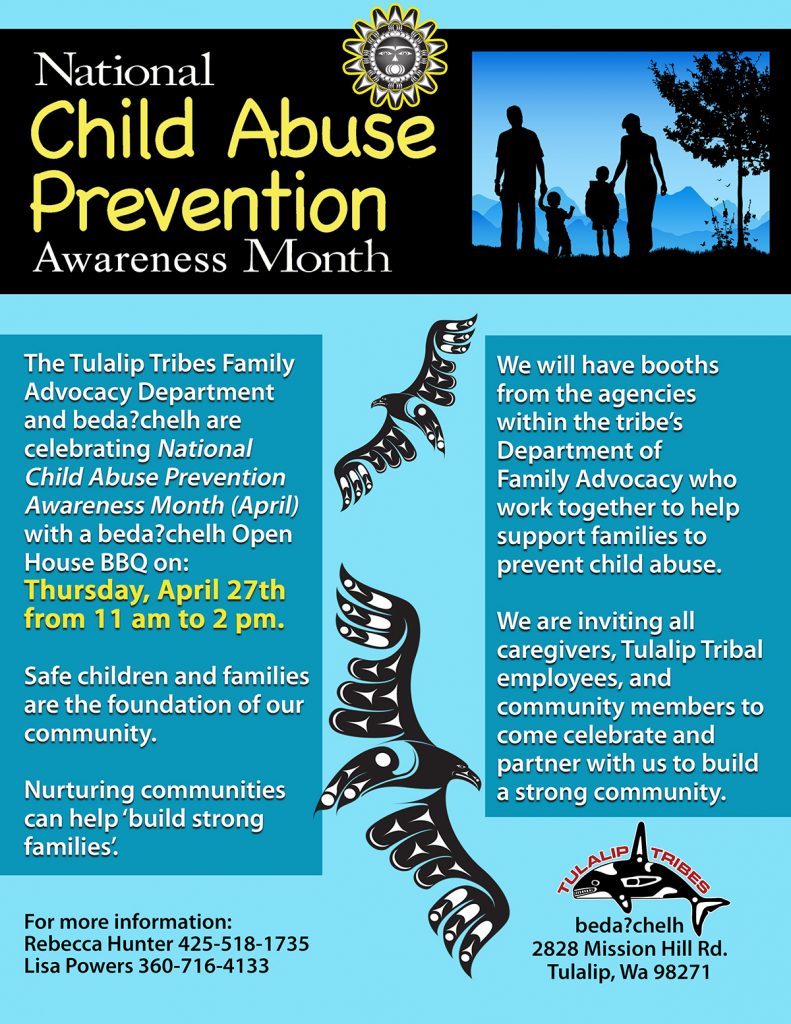Big Water Celebration, April 28
Fleece, Love and Happiness

By Kalvin Valdillez, Tulalip News
In Native America, blankets hold a significant value to many tribal communities as they are associated with honor and respect. Traditionally, blankets are gifted at various ceremonies including potlatches, pow wows and graduations. Pendleton, a blanket company based in Oregon, grew in popularity during the trade era due to their bright colors and tribal inspired designs. Not to mention they were a necessity, because the blankets are made from wool, they were warm, durable and weather resistant. In 2016, President Obama was honored and blanketed by the tribal nations of America during his last White House Tribal Nations conference.
Newborn babies are often swaddled in the wool blankets and most Native children grow up surrounded by Pendleton. For this reason, the Parent Committee of the Betty J. Taylor Early Learning Academy are raising money, by means of a raffle, to purchase over three hundred blankets for the students of the Academy. The blankets will be fleece and feature Pendleton-esque designs.
The Parent Committee is raffling a handmade drum stick, featuring horse and otter fur that was constructed by Tulalip tribal member, Richard “Two Dogs” Muir. Tickets can be purchased through April 28 in the Early Learning Academy’s lobby between 8:30 a.m. and 9:30 a.m. The cost is $5 per ticket, five tickets for $20, or an arm’s length worth of tickets for $30. The winner will be announced April 28 during the upcoming Superhero Dance, which is also organized by the Parent Committee.
For more information, please contact the Betty J. Taylor Early Learning Academy at (360) 716-4250.
April 26, 2017 syəcəb
Please use the following link to download the April 26, 2017 issue of the syəcəb:
https://www.dropbox.com/s/xhp3da2a9v6affb/April%2026%202017%20sy%C9%99c%C9%99b.pdf?dl=0
Tulalip’s got talent
By Micheal Rios, Tulalip News
On Thursday, April 13, the auditorium of Quil Ceda Tulalip Elementary was home to the artistic expression, vocal talents, and hula-hooping skills provided by the youthful, creative student body.
The 2017 talent show was a great way to showcase the students, build their confidence, and bring the community together. It’s a fun-filled event that appeals to all age groups and gives family and friends the perfect opportunity to capture long-lasting memories.
“Our annual talent show is such a great event. There is a buzz in the school prior to the talent show, with pockets of kids practicing their acts during their recess time. It’s so cute to witness,” marvels cultural specialist Chelsea Craig. “As a staff member it is beautiful to watch the kids blossom. I have seen kids who normally are pretty shy [step up] and sing in front of the whole school. I love how it really showcases such a variety of talent and empowers our kids.”
Several of the young aspiring singers covered the catchy hit song “How Far I’ll Go” from Disney’s Moana soundtrack, while a couple others utilized popular dance moves of ‘Watch Me’ (Whip/Nae Nae), while Lupita Alvarado stayed true to her cultural roots and shared a traditional Mexican folk dance with her peers. Then there were those who took creativity to the next level by coming up with their own choreography and dance moves.
The students, teachers, and parents were all blown away from the get go as a large ensemble led by Kamaya Craig opened the talent show with their own unique dance routine. Dancing to music by Beyonce, the eleven student girl-group displayed a variety of dance moves and choreographed precision. In creating the routine, Kamaya’s vision was to have a variety of girls from difference grade levels perform a song that really takes pride in who they are as young ladies. The group of 1st – 5th grade ladies met daily during lunch time to practice channeling their inner Beyonce.
Following the amazing performances, Kamaya’s mother Chelsea said, “It felt good to see the arts living in our school, we definitely need more of that!”
The annual elementary talent show set the stage to showcase so many talented kids and the student body came through, act after act. All the young entertainers braved being on center stage and performed admirably.
“Every year the talent show is a big success; 2017 was no exception. It is an event that is anticipated by parents, staff, and students alike,” explains Principal Cory Taylor. “For many years, 1st grade teacher Corina Hansen has put many hours into planning this event. Putting on an activity like this doesn’t just happen without a vision. As a school, we are fortunate to have her leadership in coordinating the talent show.
“All of the performers did such an amazing job. There was a wide variety of talent ranging from comedians to artists. Without question, these students will do amazing things with their lives. As a school, we applaud them for their great work.”
Tulalip Tribes Stickgame Tournament, June 2-4 Tulalip Amphitheatre
Easter Bunny hops around Early Learning Academy
Micheal Rios, Tulalip News
Looks of surprise and sheer joy were shared by countless students of the Betty J. Taylor Early Learning Academy when the Easter Bunny hopped into town. The kids, ranging in age from toddler to 5-years-old pushed their daily activities aside and sought to be as close to the huge, furry celebrity as possible.
The rascally rabbit hopped right into the academy and proceeded to visit every classroom from ECEAP side (students birth to 3-years-old) and then onto the Montessori side (students 3-5-years-old). Nearly every classroom the white fuzzy Bunny would enter, resulted in smiles, squeals of delight, laughter and plenty of hugs.
Following the classroom visits, the Easter Bunny led the older students on several Easter egg hunts at the academy’s playground. There were mad dashes to collect the candy-filled eggs while all the students got to take home a basket filled of Easter treats.
April is Child Abuse Prevention Awareness Month
Mission Beach Water Quality Monitors Needed
General Manager provides insight to Tulalip government for UW class

By Micheal Rios, Tulalip News
Stephanie Fryberg, Associate Professor and Tulalip tribal member, is currently teaching a class at the University of Washington under the department of American Indian Studies. Introduction to American Indian Contemporary Issues and Social Issues is a 50-student class that discusses topics like identification, child welfare, government relations, treaty rights, and Indian gaming.
It’s one thing to read textbooks and scholarly articles about tribal histories, governments and the way of life on reservations, but no amount of research will be as perceptive as first-hand accounts from tribal members who know the intricate and complex systems that make-up the day-to-day operations of a Native community. That is why Stephanie extended an invite to Misty Napeahi, Tulalip Tribes General Manager, to be a guest speaker for the class. Misty accepted and gave an insightful presentation to the collegiate students on Monday, April 10.
In a fascinating tactic, Misty began her presentation by wanting to give the students just a small glimpse into what tribal people have gone through and continue to go through today. How it worked was each student wrote down the three most important things in their lives, three things each individual felt they could not live without. Most common answers were family, faith/spirituality, knowledge, and friends. Misty then asked for the paper students wrote their answers on and in dramatic fashion she tore up the papers and threw them in the trash.
Misty explained to the students that they just willfully handed over the things they felt were most important in their lives to an authority figure who then deemed those things unimportant and trash. Student expressions of shock and frustration were priceless as they realized the subtleties of what just occurred.
“This exercise is supposed to make you think and feel uncomfortable. It shows you how indigenous people feel almost every day,” explained Misty to her captive audience. “When I was asked to speak about contemporary issues in the workforce for the Tulalip Tribes this exercise came to mind. This is what I deal with on a daily bases, people and employees who have had family members and friends taken away, people who have been told their religion is savage and barbaric.
You all have read about historical and generational trauma, but we live it. Where I’m from and where I work, we can see and feel it on a near daily basis. Issues like domestic violence and drug addiction are a symptom of all the trauma we have gone through, that our parents and grandparents went through when they were stripped of their families, language, and religion. The traumas makes people feel powerless and that powerlessness can carry on for generations.”
Following the opening exercise, Misty went on to explain how out of the ashes of all destruction and traumas Native people went through they endured and grew to govern themselves. Using the Tulalip Tribes as her example, the students became aware of the transitions that the tribe has gone through to get where it is at today. Topics included the tribal preference code for employment, TERO, the diversity of departments that compose Tulalip’s government, and the delicate systems at work when it comes to a tribal community (where everyone knows or is related to so many others) creating a workforce of countless interpersonal relationships.
There were plenty of opportunities for the inquisitive students to ask questions and for more information on issues that peaked their interest. Misty was very honest and detailed in her responses.
Three UW students shared their immediate thoughts after witnessing General Manager Misty Napeahi give her thought provoking and informationally rich presentation.
“I thought it was great. It touched on all the things that you don’t really see, but you know are probably occurring on the reservation,” said 22-year-old Collin Youngblood.
Third-year student Harneet Grewal shared, “I thought it was really eye-opening. She spread a lot of awareness to what Native people have gone through in the past, but also what they are going through currently. To consider what a person is going through, from their family and what their mental health and background may be is so different from Western culture.”
Kenia Diaz, also a third-year student added, “I thought it was very interesting overall. Like our professor said, she is not capable of giving us the insights that the General Manager of the tribe can. I feel like the reservation itself, the way it’s governed is like a family and I really like that. That type of community is awesome because people are willing to build each other up and empower one another.”
